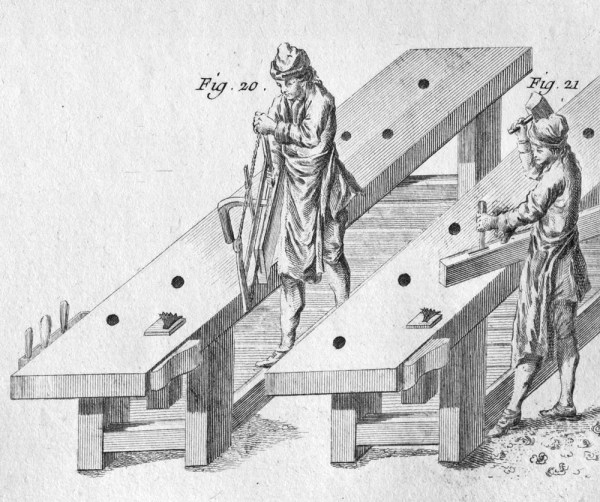
Several readers have asked why we don’t offer a digital version of “l’Art du Menuisier: The Book of Plates” when we sell digital versions of almost all of our other titles. It’s a fair question.
My answer will seem lame until Nov. 19, which is when the book ships.
During the last five years of dealing with A.J. Roubo’s “l’Art du Menuisier” on a daily basis, I have come to understand how the work was supposed to be read. I’ve read and edited about one-third of Roubo’s translated work now, and I used the plates constantly to follow along with the prose.
Time and again, I reluctantly but with a secret joy returned to the full-size 18th-century originals to help me decipher Roubo’s text. At first, having those plates on the screen of a computer seemed like a good idea so I could zoom in on details. But the plates are not just collections of little images that are meant to be digested one bit at a time.
Instead, each plate is like a living organism. Every drawing relates to the other bits on the plate. So staring at one detail will at times mislead you, or at least induce an unintentional myopia.
The plates are meant to be taken as a whole. Otherwise, what you have is like a map of Ohio with Cleveland, Columbus and Marietta missing.
But there’s more. The physicality of the original volumes is important. We wanted to try to give readers a small taste of that by printing the plates full-size and on paper that is usually reserved for corporate annual reports or art books.
To be honest, publishing “The Book of Plates” might be a financial misstep for Lost Art Press. This book was more expensive than any other single project we’ve undertaken. We had to print a large number of books in order to get the price down to a reasonable level, $100. And even then, the margins on this book are much smaller than usual for us.
We did this because we want to share this somewhat magical experience with you. And we wanted to do it so you didn’t have to spend $1,500 to $10,000 for the experience of seeing these plates as they were intended.
And that is why we are not issuing a digital edition.
— Christopher Schwarz
“The Book of Plates” is available in the Lost Art Press store for $100 with free domestic shipping until Nov. 19, 2014.
Like this:
Like Loading...






